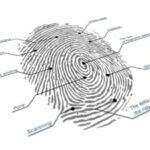Newly available research from Harvard makes the case for integrating high-res imaging into anti-spoofing systems. Authored by Linda Estella, the paper Using Photography to Strengthen Fingerprint Spoofing Defenses investigates how photography, particularly high-resolution imaging, can be combined with traditional fingerprint recognition systems to better detect and prevent spoofing attacks.

Fingerprint recognition is increasingly used in devices such as smartphones, ATMs, and security systems due to its convenience and accuracy. But it is also vulnerable to presentation attacks in which malefactors use fake fingerprints made from materials like silicone or gelatin to fool sensors. The research proposes that the integration of high-resolution cameras into biometric systems can significantly improve the detection of these spoofing attempts.
The methodology involves using high-resolution cameras alongside standard fingerprint sensors to capture more intricate details of the fingerprint, such as sweat pores and fine ridge patterns. These details are difficult to replicate in fake fingerprints and are often missed by conventional sensors. By cross-referencing the high-resolution images with a database of actual fingerprints, the system can more accurately detect spoofed fingerprints.
The research suggests that combining traditional methods with this advanced imaging technology creates a multi-layered defense against attacks.
Estella’s research builds on previous studies in the field of biometric spoofing detection, which have primarily focused on hardware and software-based solutions. While existing methods, such as texture analysis and machine learning algorithms, have shown some effectiveness, they are not foolproof, especially against high-quality spoofing materials. The paper argues that photography offers a new dimension of defense by capturing physical features that are inherently difficult to reproduce in fake fingerprints.
The results of Estella’s study are promising. The high-resolution images captured significantly more minutiae than standard fingerprint sensors, which helped the system identify small differences in ridge patterns and sweat pores. These differences were critical in detecting fake fingerprints made from materials like silicone and gelatin, which usually fail to mimic the micro-geometry of real skin. The system also demonstrated robustness against many common spoofing methods, enhancing the overall security of biometric systems.
However, the paper also discusses several challenges associated with integrating high-resolution cameras into biometric systems. One major concern is the increased processing time required to analyze the higher-quality images, which could slow down operations in high-throughput environments. Additionally, the cost of implementing high-resolution cameras on a large scale could be prohibitive, which might limit the widespread adoption of this technology.
Despite these challenges, the research concludes that high-resolution photography offers a valuable tool for strengthening fingerprint recognition systems against spoofing attacks. As attackers continue to develop more sophisticated techniques, the need for advanced defense mechanisms will grow, potentially making innovations like these essential for the future of biometric security.
Source: ResearchGate
–
September 9, 2024 – by Cass Kennedy








Follow Us